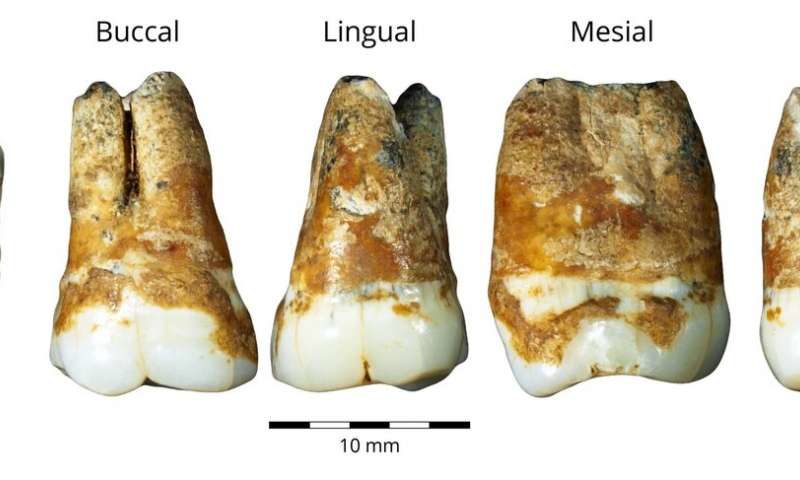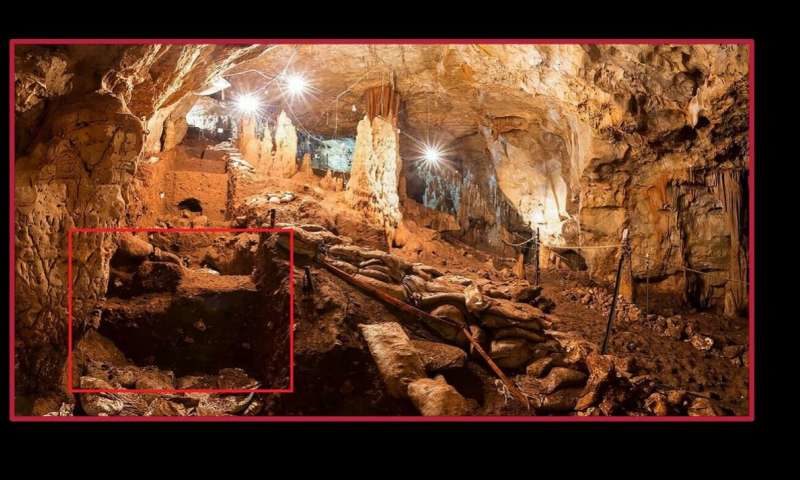
The Aurignacian culture first appeared in Europe some 43,000 years ago and is known for having produced bone tools, artifacts, jewelry, musical instruments, and cave paintings. For years, researchers believed that modern man's entry into Europe led to the rapid decline of the Neanderthals, either through violent confrontation or wresting control of food sources. But recent genetic studies have shown that Neanderthals did not vanish. Instead, they assimilated into modern human immigrant populations. The new study adds further evidence to substantiate this theory.
Through cutting-edge dental research on six human teeth discovered at Manot Cave in the Western Galilee, Dr. Rachel Sarig of TAU's School of Dental Medicine and Dan David Center Center for Human Evolution and Biohistory Research, Sackler Faculty of Medicine in collaboration with Dr. Omry Barzilai of the Israel Antiquities Authority and colleagues in Austria and the United States, have demonstrated that Aurignacians arrived in modern-day Israel from Europe some 40,000 years ago — and that these Aurignacians comprised Neanderthals and Homo sapiens alike.

"Unlike bones, teeth are preserved well because they're made of enamel, the substance in the human body most resistant to the effects of time," Dr. Sarig explains. "The structure, shape, and topography or surface bumps of the teeth provided important genetic information. We were able to use the external and internal shape of the teeth found in the cave to associate them with typical hominin groups: Neanderthal and Homo sapiens."
The researchers performed in-depth lab tests using micro-CT scans and 3-D analyses on four of the teeth. The results surprised the researchers: Two teeth showed a typical morphology for Homo sapiens; one tooth showed features characteristic of Neanderthals; the last tooth showed a combination of Neanderthal and Homo sapiens features.
This combination of Neanderthal and modern human features has, to date, been found only in European populations from the early Paleolithic period, suggesting their common origin.
"Following the migration of European populations into this region, a new culture existed in the Levant for a short time, approximately 2,000-3,000 years. It then disappeared for no apparent reason," adds Dr. Sarig. "Now we know something about their makeup."
"Until now, we hadn't found any human remains with valid dating from this period in Israel," adds Prof. Israel Hershkovitz, head of the Dan David Center, "so the group remains a mystery. This groundbreaking study contributes to the story of the population responsible for some of the world's most important cultural contributions."



Comment: See also:
- Previously unknown "proto-hominin" species suggests ancestor of humans evolved in Europe not Africa
- Out of Europe rather than out of Africa, new study suggest
- The strange 175,000-year-old circle structures built by Neanderthals in French cave
- Study suggests multiple episodes of inter-breeding between Neanderthal and humans
- First hominins on the Tibetan Plateau were Denisovans - 160,000 years ago
And check out SOTT radio's: